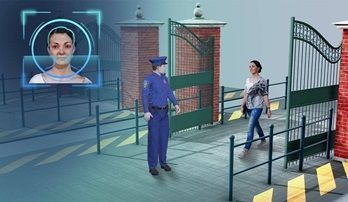The European Union has launched a pilot project to study how biometrics can be captured from on-the-move subjects to speed up identity checks at border crossings. The goal of the project, known as PopEye, is to overcome the difficulties that current biometric technologies like fingerprints and 2D facial recognition have in dealing with common conditions like poor lighting or changes in appearance. The integration of gait recognition with other biometrics is part of the approach participants will take.
PopEye is supported by the European Commission, and draws on the AIT Austrian Institute of Technology, Norwegian University of Science and Technology (NTNU), Halmstad University, Idiap Research Institute, KU Leuven, Vrije Universiteit Brussel (VUB), University of Twente, Idemia Identity & Security Germany AG, Netcompany-Intrasoft, Quadible, European Association for Biometrics, Finland’s Ministry of the Interior and the Romanian Border Authorities, according to a LinkedIn post.
PopEye is an acronym for “robust Privacy-preserving biOmetric technologies for Passengers’ identification and verification at EU external borders maximising the accuracY, reliability and throughput of the rEcognition,” according to a description from VUB Tech Transfer.
The EAB will lead the three-year project, which has a budget of just over 3.2 million euros (US$3.5 million) from a Horizon grant. VUB and KU Leuven will lead project compliance with ethics standards and AI regulations like GDPR and the AI Act. Impact assessments will be conducted to ensure human rights, privacy and data protection are preserved. If the project is successful, it will lead to the introduction of innovative biometric technologies for use by EU citizens and third-country nationals. The pilots will be conducted at the external borders of Romania and Finland, EAB CEO Dinusha Frings revealed on LinkedIn.








